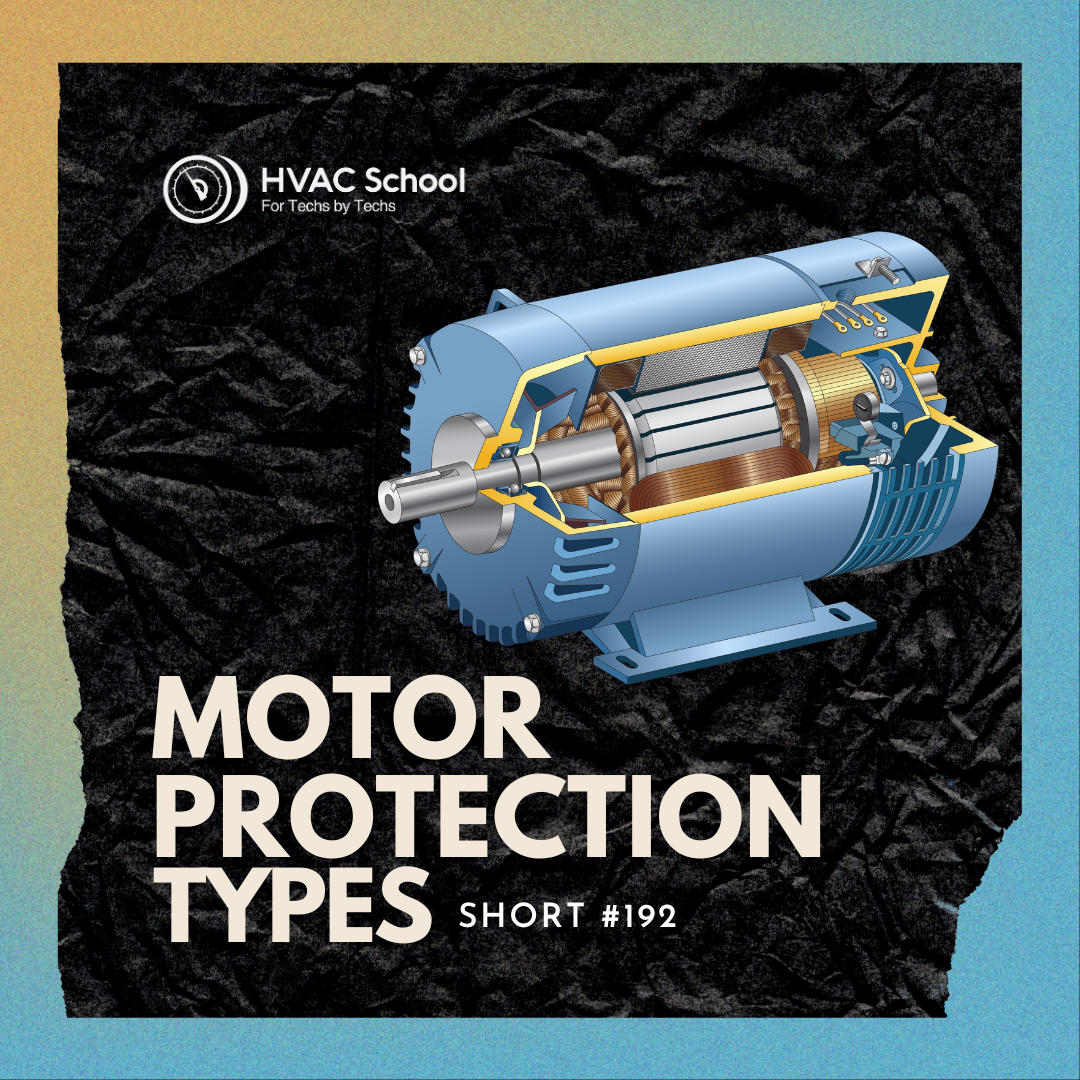Motor Protection Types – Short #192

In this short podcast episode, Bryan talks about motor protection types, including overloads.
The most common overload we see in residential HVAC is a built-in thermal overload, which is usually a bimetallic disk that flexes in response to heat (such as from a locked condition, electrical problem, or simply running hot) and opens the circuit. The two metals have different expansion and contraction rates, which causes the flexing; they will return to their original position once the motor cools down. In some cases, these can fail when they open and close too often; they are not designed for switching duty. Many circuit breakers have a similar thermal design and may be prone to nuisance tripping in the summer.
A lot of commercial motors rely on external overloads; some are even built into the electrical box rather than the compressor. These external magnetic overloads are often integrated into the contactor, which turns the motor on and off; this type of contactor is called a starter. These starters may have adjustable overload settings based on current, not just temperature (which may also respond to nuisance sources of heat and require a cooldown period). Some circuit breakers also trip magnetically and are less likely to be affected by temperature.
Thermistor-based overloads usually consist of a PTC (positive temperature coefficient) resistor; as temperature goes up, resistance goes up, which can take a motor winding out of the circuit. NTCs are in separate parallel circuits with relays; as the resistance decreases, it pulls in a coil that opens the circuit.
Have a question that you want us to answer on the podcast? Submit your questions at https://www.speakpipe.com/hvacschool.
Learn more about the 5th Annual HVACR Training Symposium at https://hvacrschool.com/Symposium24.
If you have an iPhone, subscribe to the podcast HERE, and if you have an Android phone, subscribe HERE.”
Subscribe to our YouTube channel at https://www.youtube.com/@HVACS.
Check out our handy calculators HERE or on the HVAC School Mobile App (Google Play Store or App Store).
Author:









Comments
To leave a comment, you need to log in.
Log In